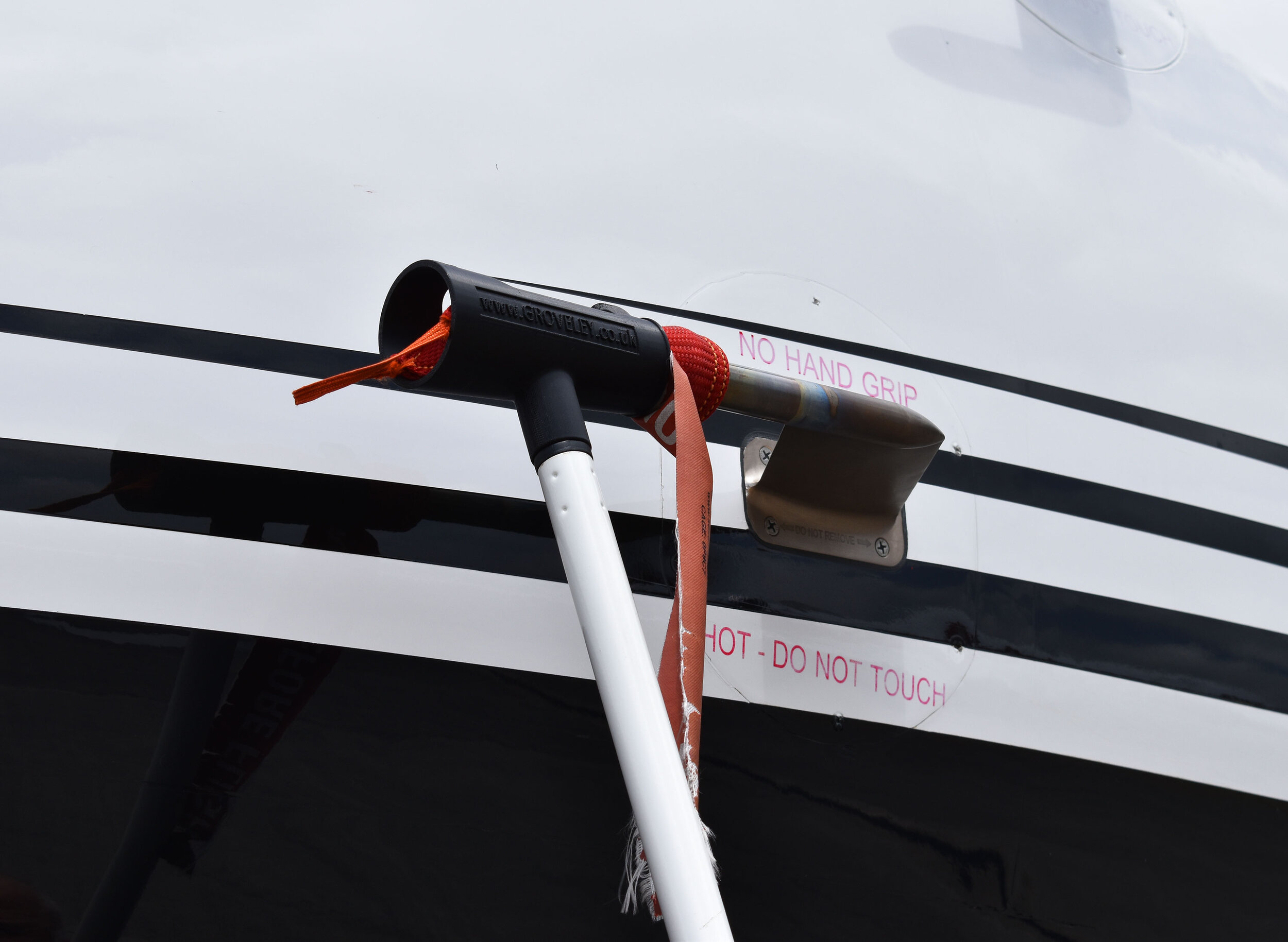
Why do I need a Pitot Stick?
In a word “Safety”
Aviation safety should never be overlooked which is why the Pitot Static system should always be protected from contamination whilst the aircraft is parked. Standard safety practice is to cover the Pitot Tubes and Static vents, but as experienced pilots and technicians will know, not all aircraft’s Pitot Tubes are easily accessible from the ground.
Often the harder to reach Pitot Tubes require a stand or step ladder for the installation or removal of the cover, and where these are not available the covers are sometimes left off.
Having a PitotStick as standard equipment on board the aircraft means this problem is easily rectified, and the cover can always be easily and safely installed or removed, reducing the risk of damage or contamination.
Why do I need to protect the Pitot Static system?
The aircraft’s Pitot Static system comprises of a number of sensors which detect the ambient air pressure affected and unaffected by the forward motion of the aircraft.
These pressures, known as Pitot Pressure and Static Pressure, are used on their own or in combination with each other to provide indications of various flight parameters. Most modern aircraft are fitted with Air Data Computers, which use inputs from the Pitot Static system and from Temperature sensors to determine Indicated Airspeed, Mach Number, True Airspeed, Altitude and Total Air Temperature. This data is subsequently fed to other aircraft systems.
Pitot tubes and Static vents are normally covered when the aircraft is parked for more than a short period of time to reduce the chance of blockage or contamination.
Heaters are fitted to reduce contamination from water and to prevent blockage by ice. Blocked or partially blocked Pitot Tubes will provide inaccurate data and information to the operating crew. The consequences of which can be fatal.
On February 1996, a Boeing 757 departed from the Dominican Republic after standing for a few days without any protective covers fitted. Unbeknown to the crew, an insect had built a nest in the one Pitot Tube which subsequently caused data inaccuracies. 5 minutes after Take-Off, the aircraft crashed into the sea with the loss of all 189 lives. There are many other documented cases of this type of event. Both the UK CAA (Civil Aviation Authority) and EASA (European Union Aviation Safety Agency) have issued Safety Information Notices relating to Pitot system contamination.

